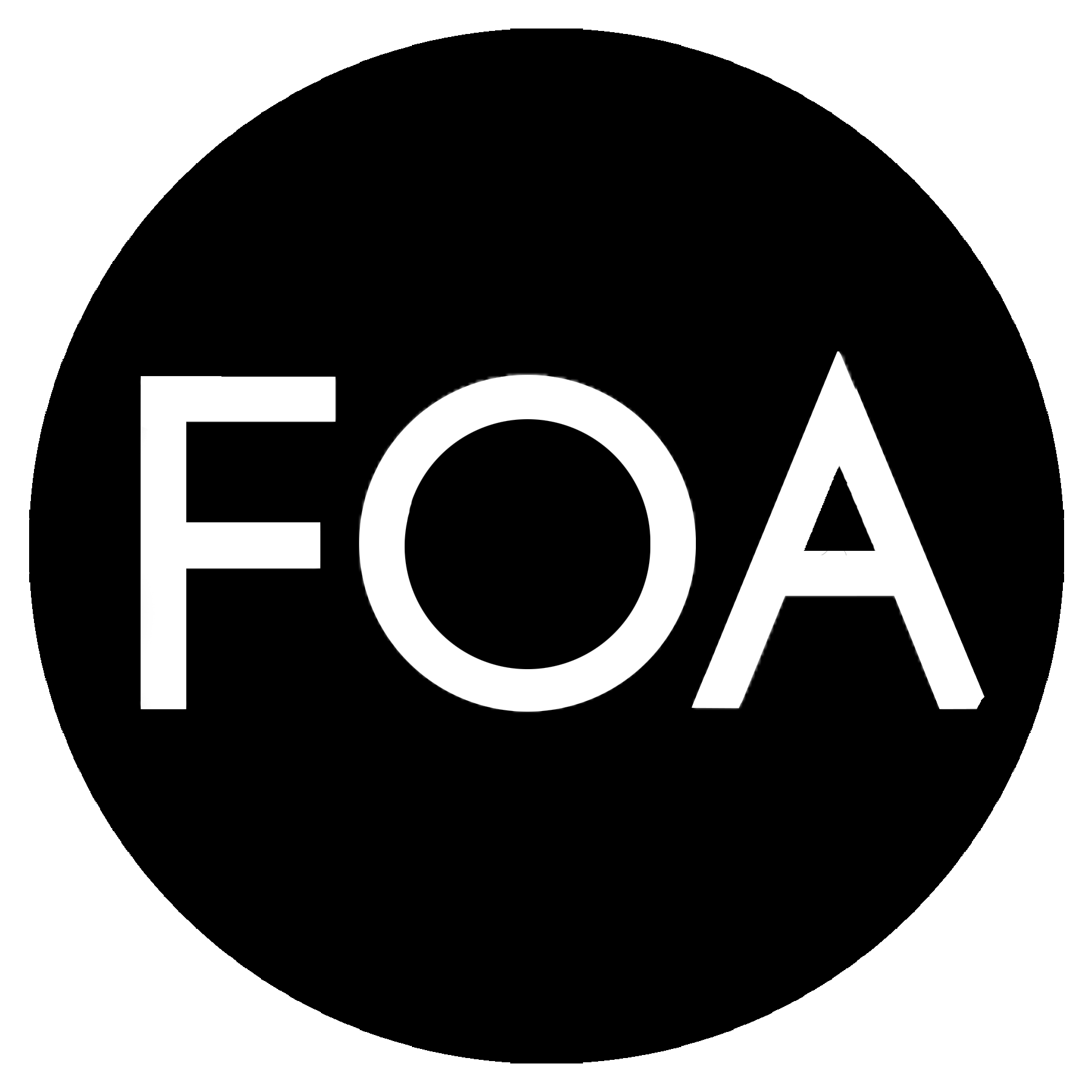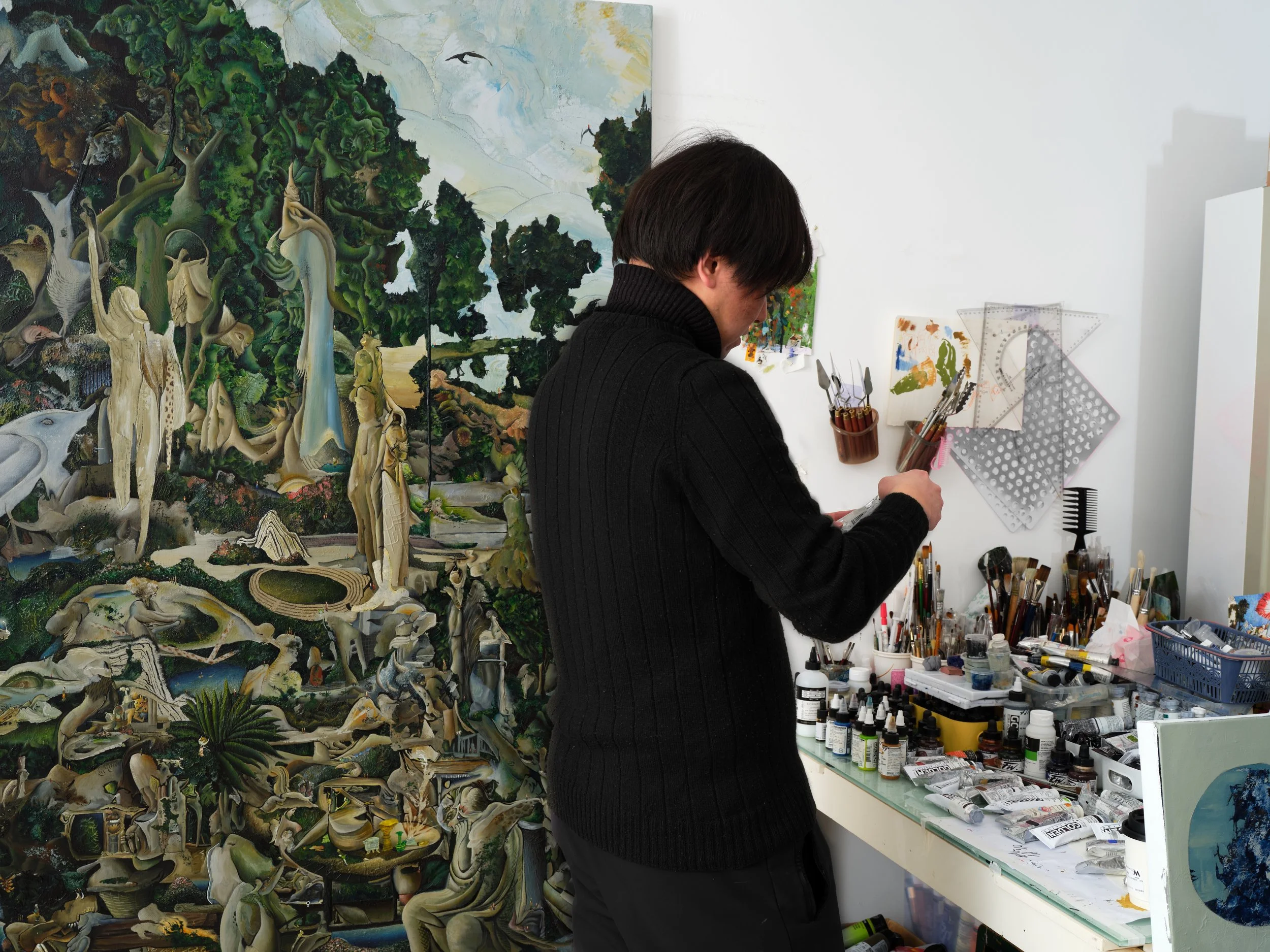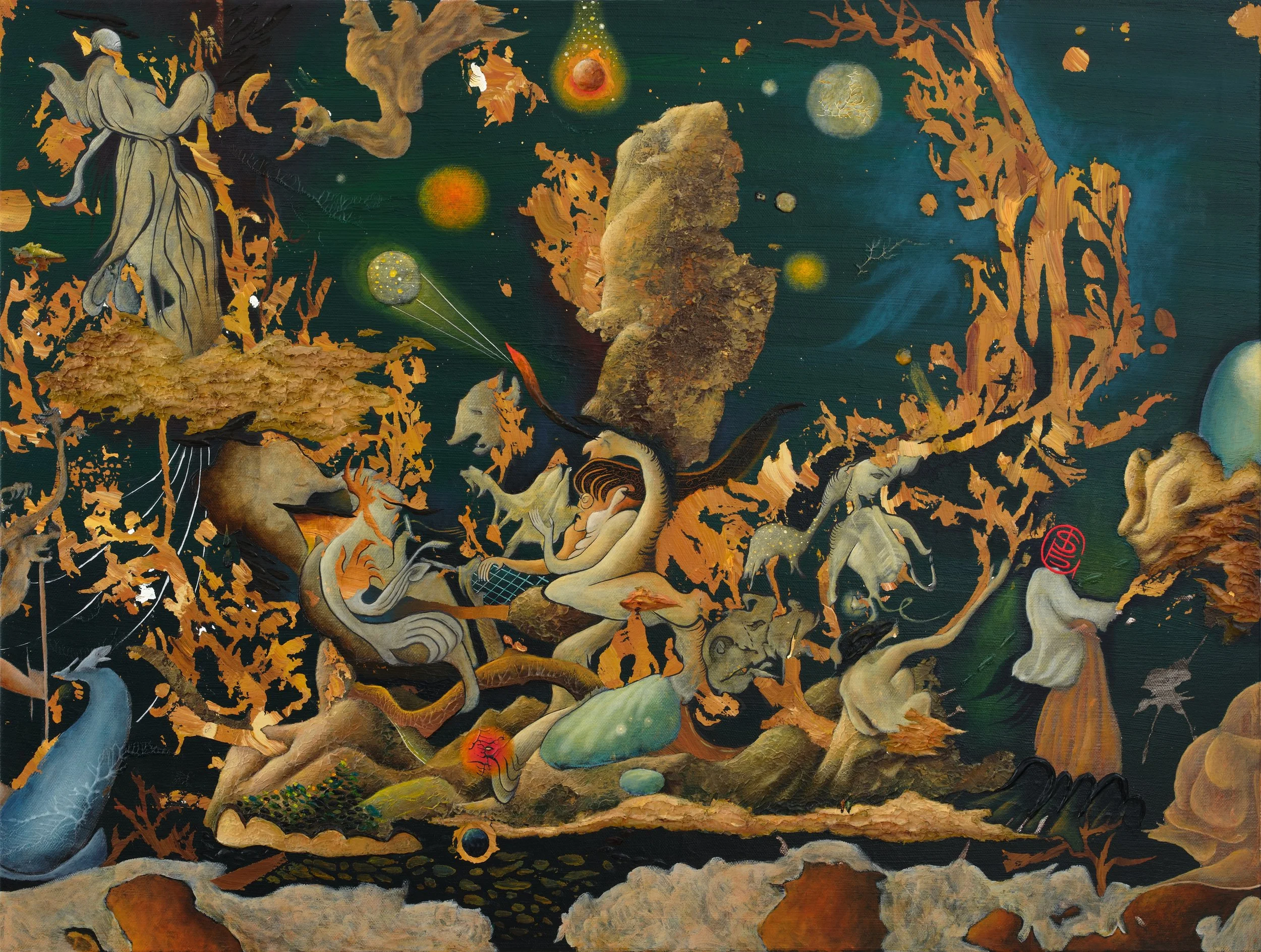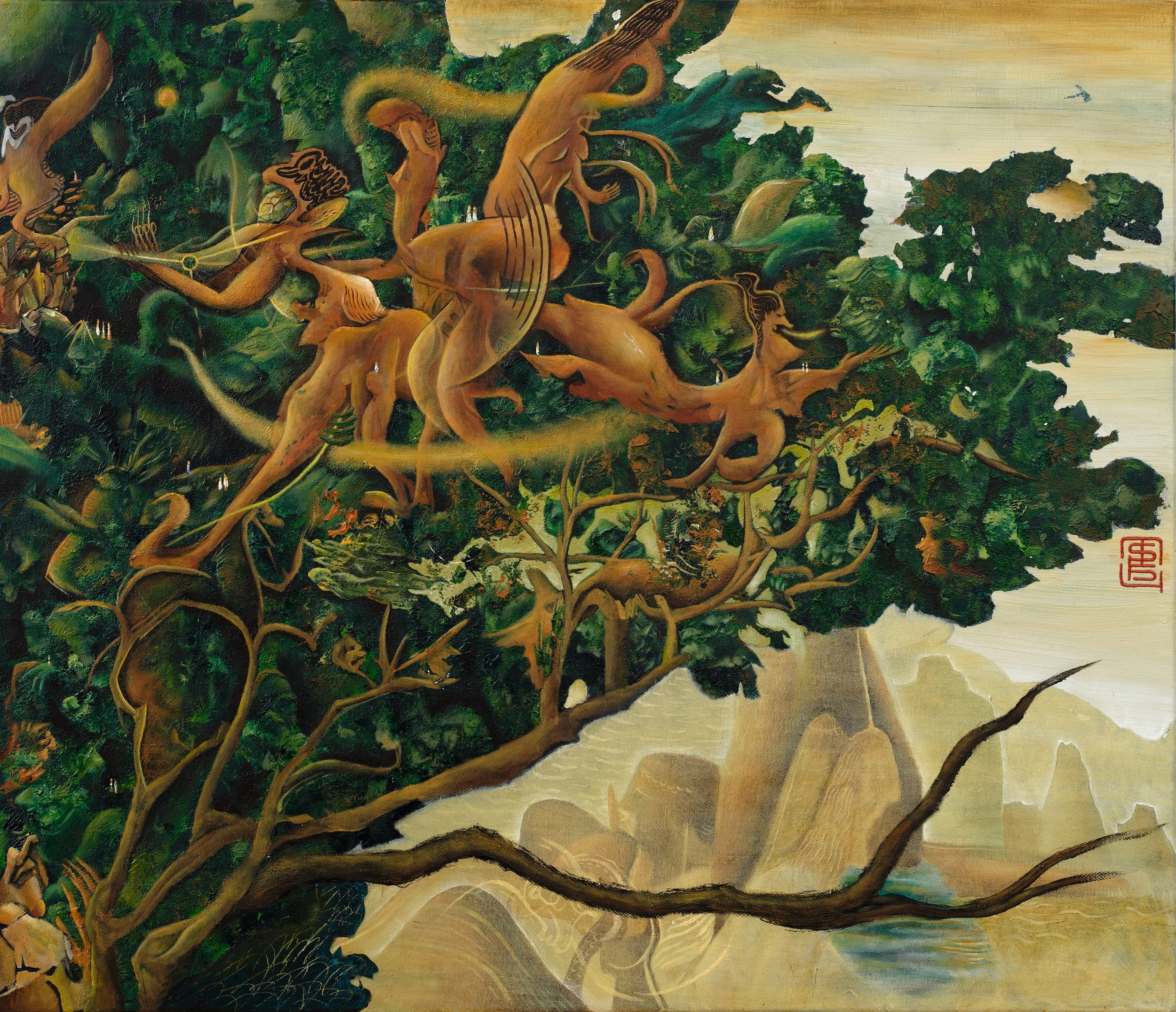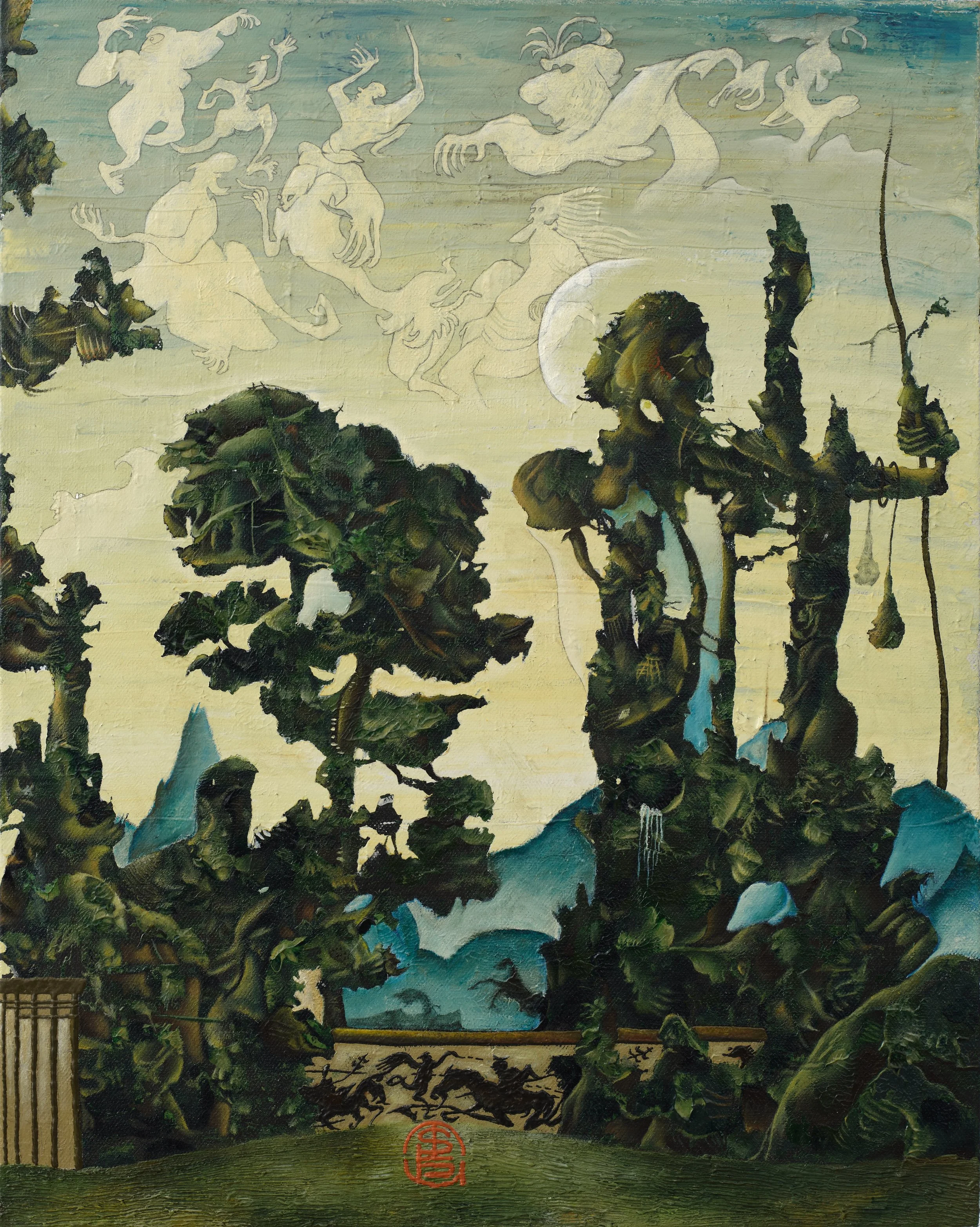Interview with NISKY
NISKY
NISKY is a multidisciplinary artist who fuses painting, music, literature, and cinematic influences into a cohesive creative vision. His pseudonym honors his admiration for visionary filmmakers Federico Fellini and Krzysztof Kieslowski. Currently, he is living and working in Shanghai. His work has continued to exhibit in China, Europe, and in the U.S.A., including Fou Gallery, New York (2025); Galerie Dumonteil, Paris (2024/2017); Galerie Dumonteil, New York (2014); Galerie Dumonteill, Shanghai (2020/2017/2013) and Power Station of Art, Shanghai (2013). He has been widely featured in publications such as Neocha, Shanghai Daily, Artron, and IDEAT. NISKY has collaborated on notable commissions with renowned brands, such as Rolls-Royce (2022) and ELLE China (2013), exemplifying his versatile, multidisciplinary approach. His work is in the permanent collection of Xintiandi (Shanghai).
A musician since founding his band at 18, NISKY approaches art and music with the belief that creation must "ignite" the artist. His practice revolves around Metacollage, a pioneering method that transcends traditional collage by achieving a complete osmosis between diverse materials and techniques. This innovative process blends spontaneity and intention, as he transforms textured paint layers and accidental marks into vivid landscapes and figures—mirroring the imagination of finding shapes in the clouds. Drawing inspiration from the revolutionary culture of the 1950s and 60s and artists like Max Ernst, Zao Wou-Ki, and Anselm Kiefer, NISKY’s textured canvases embody a dynamic interplay of tradition and innovation, bridging art forms to create a truly immersive experience.
INTERVIEW WITH NISKY BY LAURA DAY WEBB
Can you share a bit about yourself and what drew you to pursue a career as an artist?
Hello everyone, my name is NISKY, and my Chinese name is Yu Yang. I’m thrilled to be holding my solo exhibition at Fou Gallery. Besides painting, I also write songs and participate in some of the composition and arrangement processes. So far, I’ve released over 30 songs—though not many people have listened to them yet (haha).
Since childhood, I’ve loved doodling on textbooks, workbooks, and even exam papers. As I grew older, I realized that my accumulated imagination, perspectives on the world, and the knowledge and experiences gained through reading and watching could all be expressed through imagery. That’s when I knew I had to keep painting and create something truly exciting.
NISKY is a pseudonym you have been exhibiting under throughout your career. What drew you to this decision and what meaning does the moniker hold for you?
The name NISKY originated from a fusion of two filmmakers - NI from Federico Fellini and SKY from Krzysztof Kieślowski.
During high school, there were many video stores near my school, and my biggest joy after class was hunting for DVDs. At the time, online resources were relatively limited, so the only way to watch films by master directors was to find them myself—or exchange with friends. I was deeply drawn to Fellini’s boundless imagination and Kieślowski’s profound reflections on human existence and fate. They were my two biggest inspirations at the time.
In its earliest form, NISKY also embodied my ambition to integrate as much imagination as possible and use it to explore the unpredictability of human existence and the world itself.
As I discovered more directors, I found myself particularly captivated by Italian and Eastern European cinema. Over time, NISKY took on new layers of meaning. When paired with Antonioni and Tarkovsky, it became a distillation of existential alienation throughout history. When combined with Pasolini and Polanski, it evoked an underlying skepticism toward order hidden beneath the surface of desire. These shifting influences, though unconscious at the time, have profoundly shaped my artistic practice.
You employ Metacollage as a means of intertwining various techniques and materials across your canvases. Can you speak more to this pioneering methodology and how it informs your work?
The idea of Metaollage was first proposed by German composer Karlheinz Stockhausen. He believed that the "intermodulation" of electronic sounds in electronic music allowed composers to transcend the simple juxtaposition of unrelated materials and achieve a state of "complete permeation," where different elements fused into a higher-level unity.
A key aspect of this concept is electronic intermodulation, which Stockhausen preferred to execute by imposing the structural elements of one material onto another, creating a profound interplay between them.
In painting, I see this kind of intermodulation as more akin to insight. The fusion process is based on distilling similarities between different styles, while the contrasts between elements serve as a way to prevent them from becoming isolated from their original context—some differences should be deliberately preserved. This approach breathes new life into the original materials.
For instance, the Northern Renaissance and the Swinging London era share a strikingly similar use of bold colors. However, their thematic differences are significant: the former focuses on religious and moral narratives, while the latter emphasizes secular pleasure, consumer culture, and individual liberation.
By applying my Metacollage approach, we can merge them based on their shared color palette, while their stark thematic differences create a final composition that is more dimensional and dynamic.
I encourage anyone interested to experiment with creating their own Metacollage! It might sound complex, but the process is incredibly fun.
NISKY: Il paradiso non finito, Fou Gallery, New York. Photograph by Ken Lee
Your work draws inspiration from interdisciplinary artistic composition across music, literature, painting, and cinema. Do you have a particular approach to engaging with these various elements, as you embark on a new work?
Whenever I start a new painting, I first come up with a title. From there, I let the title guide the rest of the creative process. In my view, a strong title determines at least half the success of a piece! (It may sound absurd, but perhaps this stems from my experience in songwriting—after all, a great song title means everything.)
For example, my piece Midnight Genesis was inspired by a line of poetry I wrote: "A light-year between the stars may be nothing more than a god’s absentminded yawn."
Once I settled on the title, I built upon the associations it evoked—cosmos, mythology, astrology, history—and further refined it through specific artistic styles such as Renaissance painting, ancient Greek vase patterns, and Han Dynasty stone reliefs. From there, the creative process flowed naturally.
Do you have any upcoming projects or shows you would like to share?
Lately, I’ve been studying the landscape paintings of Ming dynasty artist Wu Bin. The structure of his mountains and rocks is incredibly surreal, almost dreamlike. Moving forward, I aim to further expand and refine this surrealistic thread in my work: Bosch → Wu Bin → Ernst. I hope to create even more distinctive works that explore this lineage.
And, finally, if you could study with an artist past or present who would it be and why?
Max Ernst’s exploration of paint textures has had a profound impact on me. If I could be his assistant, that would be amazing—haha. I’m sure I’d pick up countless unconventional techniques that haven’t yet been recorded in art history!
FEATURED WORK
